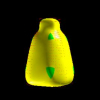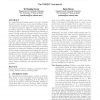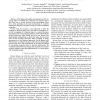1380 search results - page 39 / 276 » Learning Hierarchical Shape Models from Examples |
ICCV
1998
IEEE
14 years 9 months ago
1998
IEEE
A new dynamic subdivision surface model is proposed for shape recovery from 3D data sets. The model inherits the attractive properties of the Catmull-Clark subdivision scheme and ...
BMCBI
2010
13 years 5 months ago
2010
Background: To exploit the flood of data from advances in high throughput imaging of optically sectioned nuclei, image analysis methods need to correctly detect thousands of nucle...
CVPR
2005
IEEE
14 years 9 months ago
2005
IEEE
Shape From Shading is known to be an ill-posed problem. We show in this paper that if we model the problem in a different way than it is usually done, more precisely by taking int...
KCAP
2009
ACM
14 years 2 months ago
2009
ACM
As computational learning agents move into domains that incur real costs (e.g., autonomous driving or financial investment), it will be necessary to learn good policies without n...
ICRA
2010
IEEE
13 years 6 months ago
2010
IEEE
Abstract— Most large-scale public environments provide direction signs to facilitate the orientation for humans and to find their way to a goal location in the environment. Thus...



